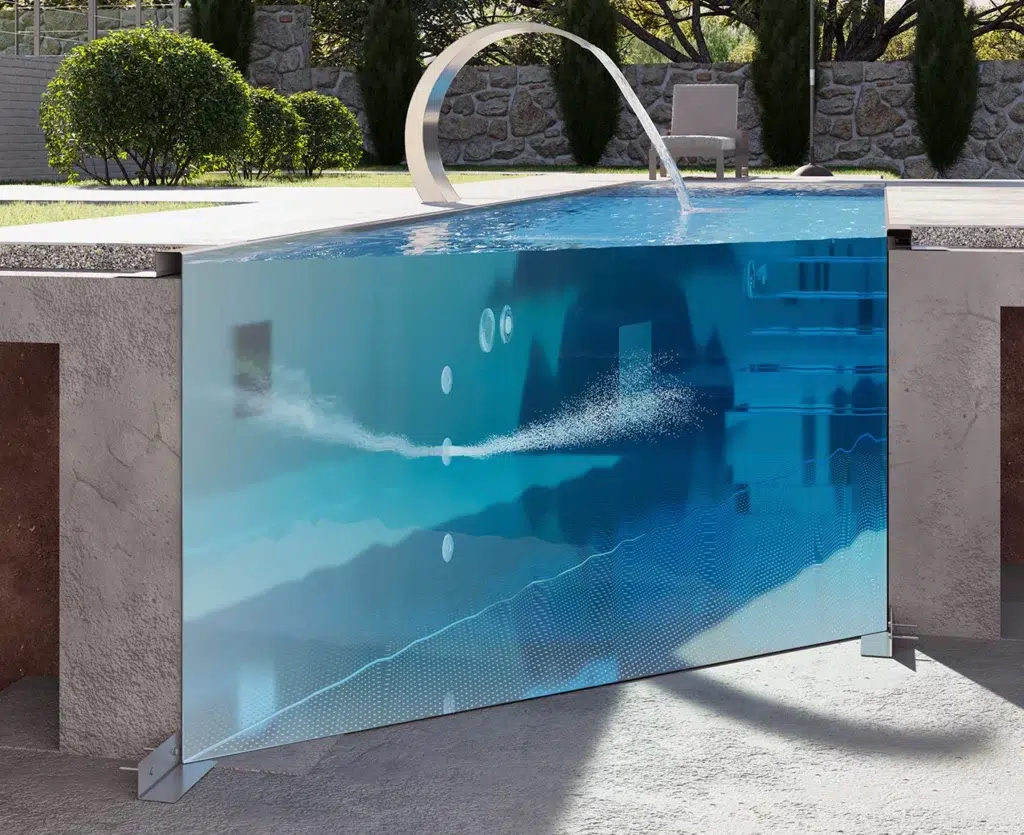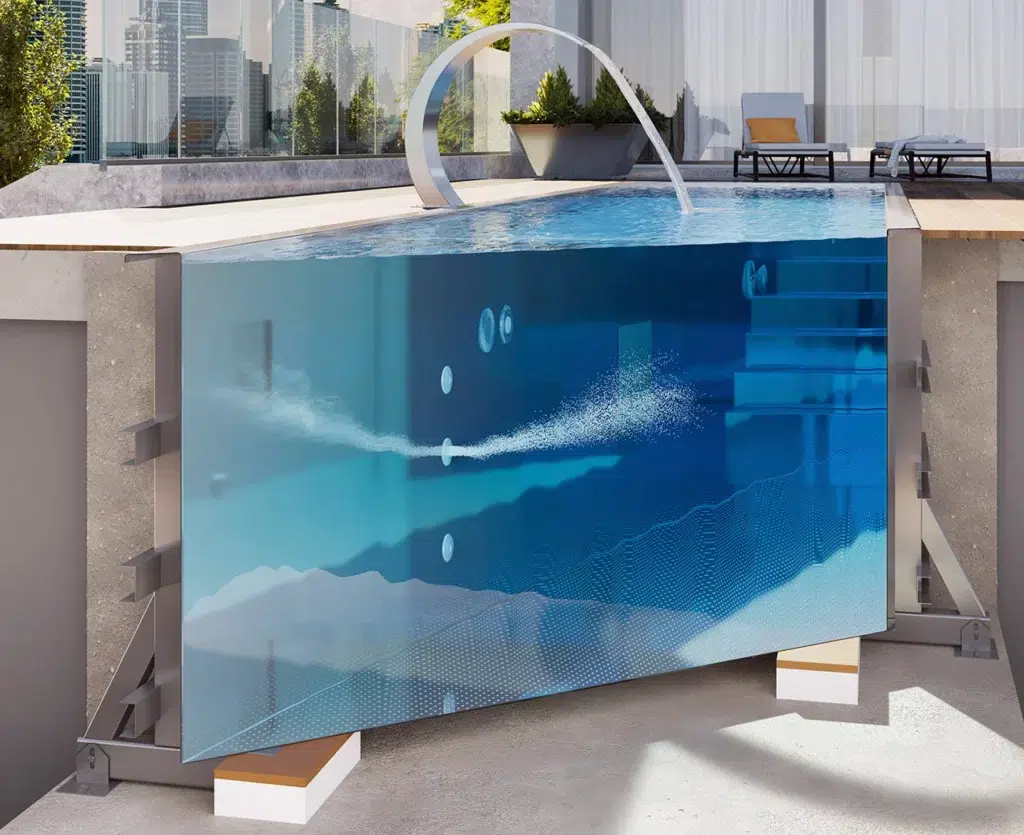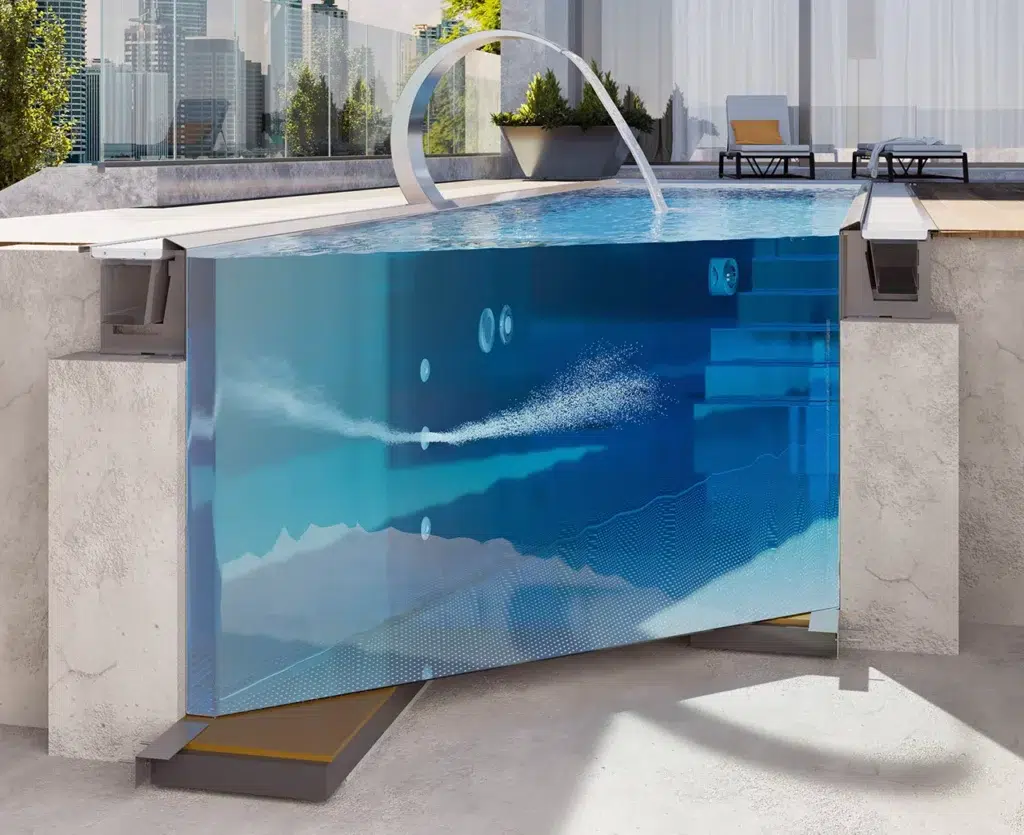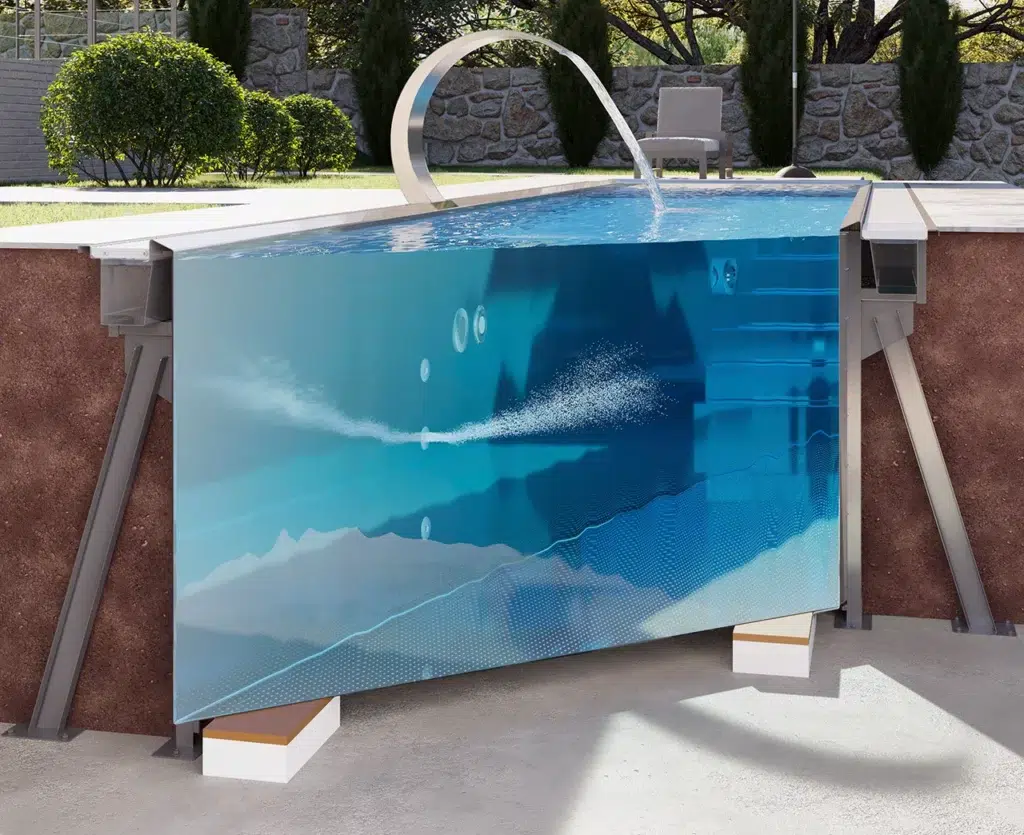New stainless steel pool
Self-supporting vs. lining
Stainless steel pools are the only pools that do not require any structural support. Only a foundation slab or a foundation strip is required to set up or anchor the pool. The advantage of the self-supporting variant is the short construction time and the low number of interfaces in the entire pool project. In the self-supporting version, however, more stainless steel material is used for the static load-bearing capacity in the form of reinforcements at the rear of the pool and inclined supports against the pool. This is why this variant is the more expensive in terms of pool price. In the overall view of the project, however, the difference is minimized as the construction work still has to be added.
For linings, a concrete body, the foundation slab and self-supporting concrete walls must be installed first. The concrete body is then clad with stainless steel sheets. Overall, this variant is the cheapest way to create a stainless steel basin, but not the most convenient. Linings are usually only used for skimmer pools, as the channel must be self-supporting for overflow pools and the savings effect is then too small.

Skimmer pool
From a technical point of view, all types of overflow pools and skimmer pools are possible. For technical reasons, skimmer pools are not permitted in public areas. However, the use of skimmer pools is widespread in the private sector. The biggest difference between skimmer pools and overflow pools is the height of the water level. In the overflow basin, the water is drained into the channel. The result is a beautiful effect of endlessly flowing water. In a skimmer pool, the water level is lower than the pool head.
The advantages and disadvantages of a skimmer pool compared to an overflow pool are:
- Lower total investment costs
- No expansion tank required, saving you space for the water technology
- Lower operating noise, as there is no channel
- The look – even if this is a matter of taste. However, an overflow pool is considered the visually more attractive option compared to a skimmer pool.
- Wave development during swimming due to lower water level. This can be annoying when swimming.
- Poorer cleaning options, as water is usually only extracted and cleaned via the surface skimmers. In the overflow basin, this takes place all around the channel. In addition, the water flow in an overflow pool is usually evenly distributed from below throughout the pool, whereas in a skimmer pool it is usually distributed via the nozzles on one side of the wall.
- With skimmer pools, dirt and limescale residue on the waterline cannot be completely avoided. There is no water line in the overflow pool, as the water level is slightly higher than the pool head and therefore the water always overflows.
Tip for your skimmer pool:
We integrate numerous other features such as lighting, air attractions and waterfall showers according to your wishes.
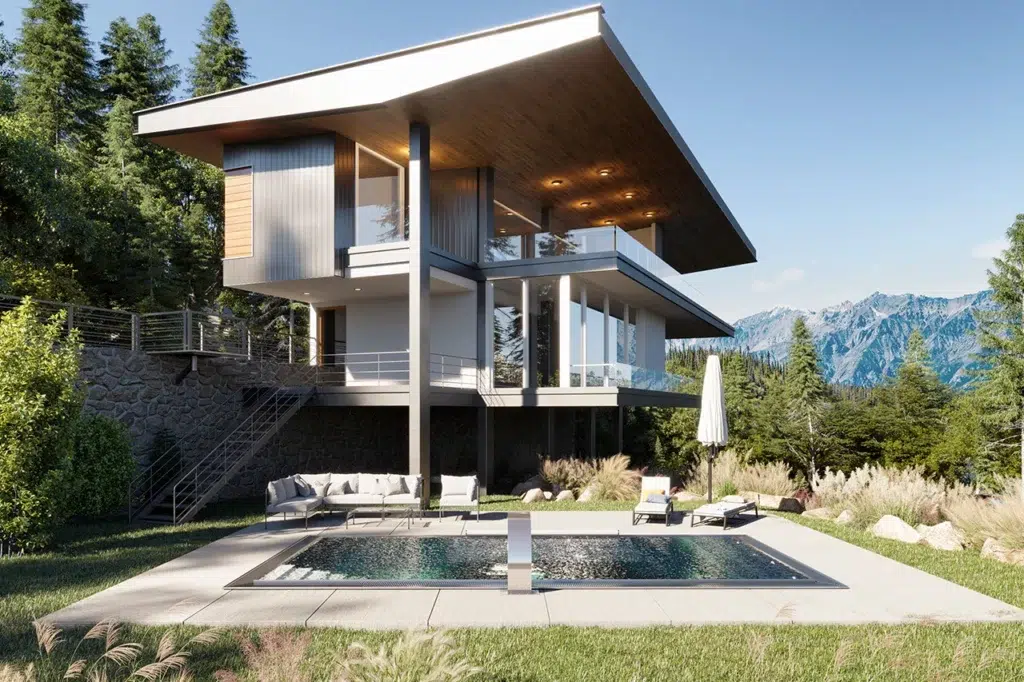
Overflow basin
From a technical point of view, all types of overflow pools and skimmer pools are possible. For technical reasons, skimmer pools are not permitted in public areas. However, the use of skimmer pools is widespread in the private sector. The biggest difference between skimmer pools and overflow pools is the height of the water level. In the overflow basin, the water is drained into the channel. The result is a beautiful effect of endlessly flowing water. In a skimmer pool, the water level is lower than the pool head.
The advantages and disadvantages of a skimmer pool compared to an overflow pool are:
- The look – even if this is a matter of taste. However, an overflow pool is considered the visually more attractive option compared to a skimmer pool.
- Wave development during swimming is discharged via the overflow channel.
- Better cleaning effect. In the overflow basin, this takes place all around the channel. In addition, the water flow in an overflow pool is usually evenly distributed from below throughout the pool, whereas in a skimmer pool it is usually distributed via the nozzles on one side of the wall.
- There is no water line in the overflow pool, as the water level is slightly higher than the pool head and therefore the water always overflows. This means that no limescale edges are visible.
- Higher total investment costs
- Equalizing tank required, so you need more space for the water technology
- Higher operating noise, as there is a channel
